With the debut of its fifth and final season in May 2020, Dreamworks Animation’s She-Ra and the Princesses of Power (2018-2020) made history as another children’s animated series with explicit queer representation. Led by queer creator Noelle Stevenson and a staff with many LGBTQ members, the final season ended with a central queer relationship of main characters Catra and Adora, as well as lesbian lovers Spinarella and Netossa, minor characters who receive more prominence in the 4th and 5th seasons.
This piece examines the #Catradora (the name of the canon ship between Adora and Catra) in two ways: first, examining the careful narrative planning amidst heavy-handed industry networks and platforms will be offered; and second, examining narrative queer representation as derived from anime influences.
Narrative & Tactics of Quality Control. Throughout interviews for season 5, Noelle Stevenson notes that ending with #Catradora was going to be a “big ask” from Dreamworks (Lopez 2020). Stevenson described how she carefully constructed the series to have Catra and Adora’s feelings and conflict be a central and inherent part of the program. In an interview with i09, Stevenson explains further:
“My big fear was that I would show my hand too early and get told very definitively that I was not allowed to do this … I sort of had a plan and it was like: If I can get them to this place where their relationship and that romance is central to the plot, and it can’t be removed, can’t be noted-out or it can’t be something that’s cut later, then they’ll have let me do it” (Elderkin 2020).
When pitching the season 5 end with Catra and Adora romantically together, the seeds for such a relationship had been planted over time, constructing the series in such a way that Dreamworks was unable to push back, lest the series dramatically drop in narrative quality.
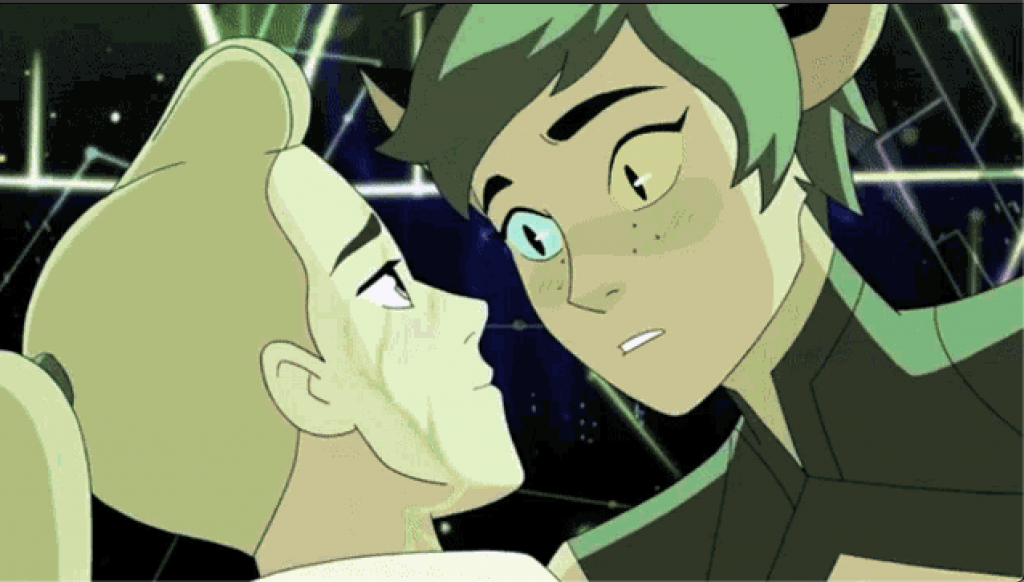
This is similar to the careful plotting to Steven Universe (2013-2020). Much like She-Ra, the series’ staff had LGBTQ members, including the series creator, Rebecca Sugar, who is bisexual and non-binary. Sugar had to fight against continuous pushback from Cartoon Network, including possible internal censure, for pushing LGBTQ representation (Holloway 2020). In order to ensure a queer wedding in season five of Steven Universe, and in anticipation of pushback by the network, Sugar and staff planted the fact that Steven loves weddings in season 2. Reportedly, when the ask was made by Sugar for the wedding, Cartoon Network executives reports tried to slide away from the idea, saying that Steven would not be into weddings, a pseudo concern Sugar was able to defy handily.
In both series, crafty show-running by queer creators and staff, with a reliance on subtext and keen emotional conflict, builds a strong enough demand for explicit queer representation down the line. Additionally, both series rely on queer love as a central force in their storytelling, whether it be romantic, or the love of a found family.
While behind the scenes in production queer representation is a contested subject, once won by creators, larger industrial forces soon take up the mantle of progressive queer representation in social media spaces.
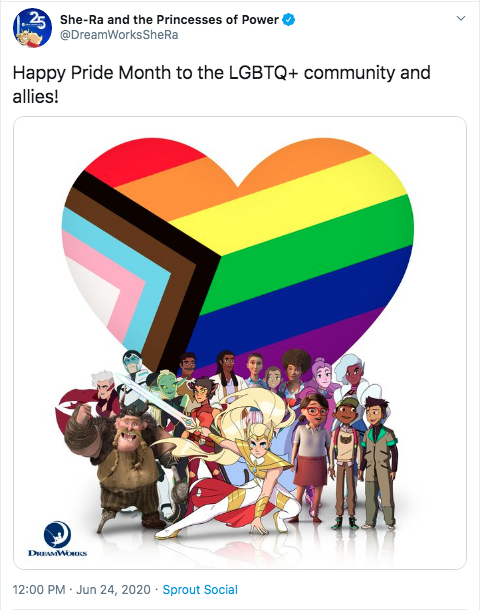
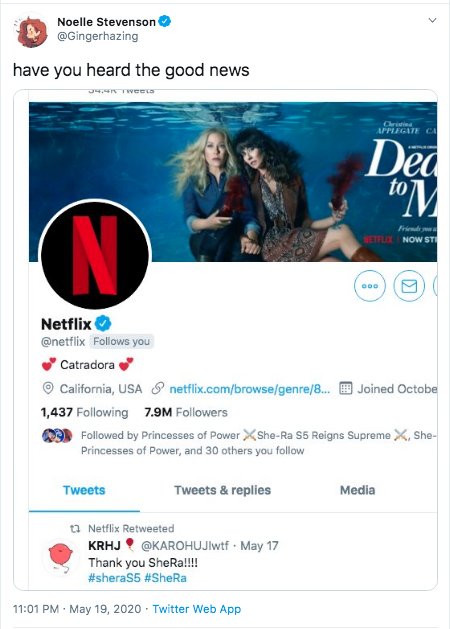
An interesting area of future research may be examining when networks or studios lose the battle to suppress queer representation, and how they pivot to capitalize on the social capital generated from progressive representation.
Anime’s Queer Influences. My research examines the impact anime has on North American animation, both aesthetically, and in terms of queer representation. For example, She-Ra is often paired with The Legend of Korra (2012-2014) and Steven Universe not only for its anime qualities, but also its queer (sub)text.
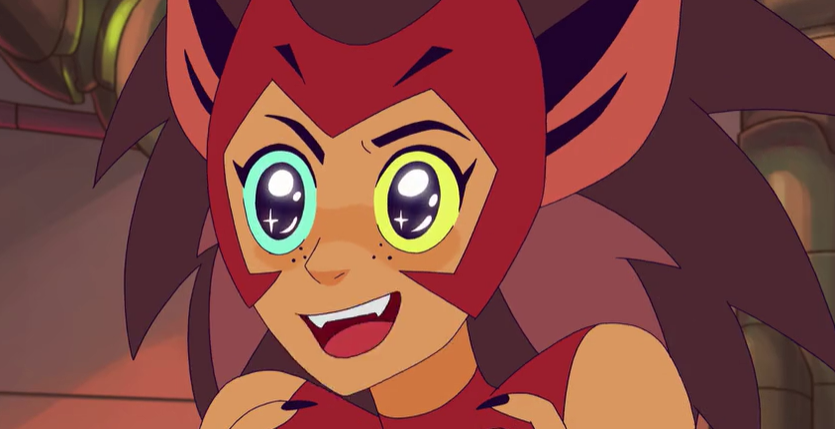
In my previous work (see Ristola 2020), I examined how the works of anime director Kunihiko Ikuhara deeply influenced Steven Universe in terms of aesthetics, queer embodiment, and representation. While She-Ra is not nearly as embedded in Ikuhara’s influences as Steven Universe, the series draws from Ikuhara’s Revolutionary Girl Utena (1997) for its critical climax.
Central to the series finale’s conflict is Adora, a figure torn between her duty to save the universe as She-Ra, even if it means sacrificing herself. In order to save planet Etheria and its magic from being weaponized by series antagonist Horde Prime, Adora must bring a magical code she acquired and became embedded within her to stop the process. Unable to control her She-Ra powers, however, such an act will end in the sacrifice of her own life in the process. Catra accompanies Adora to the center of the planet, and admits that she loves her, and questions if she really wants to die. In this moment, both Catra and Adora must face overcome their critical flaws: Adora’s strict adherence to self-sacrifice, no matter the cost to herself, and Catra’s resistance to trusting and connecting with others. Adora and Catra kiss, Adora’s She-Ra’s powers are restored, and the planet is saved.
That Adora and Catra open themselves up to love in the finale not only saves the universe, but themselves. Such vulnerability is not a weakness, but a strength. In this way, queer love is re-positioned as what saves the entire galaxy from domination.
Stevenson has said in interviews that this ending was in part meant to be critical of the sacrificial hero trope. She stated: “To be motivated by love is also to be motivated by individual love … It’s a difficult story to tell because it goes against what our idea of heroism is, especially [for] women who are expected to sacrifice everything” (Lopez 2020).
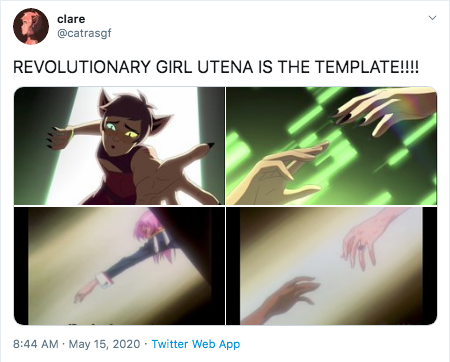
What is notable in the scene is that it directly echos the climax of Revolutionary Girl Utena, both visually and thematically. Much as Catra reaches out here hand in Adora’s vision, Utena reaches out to Anthy, a similar character who sacrifices herself for another.
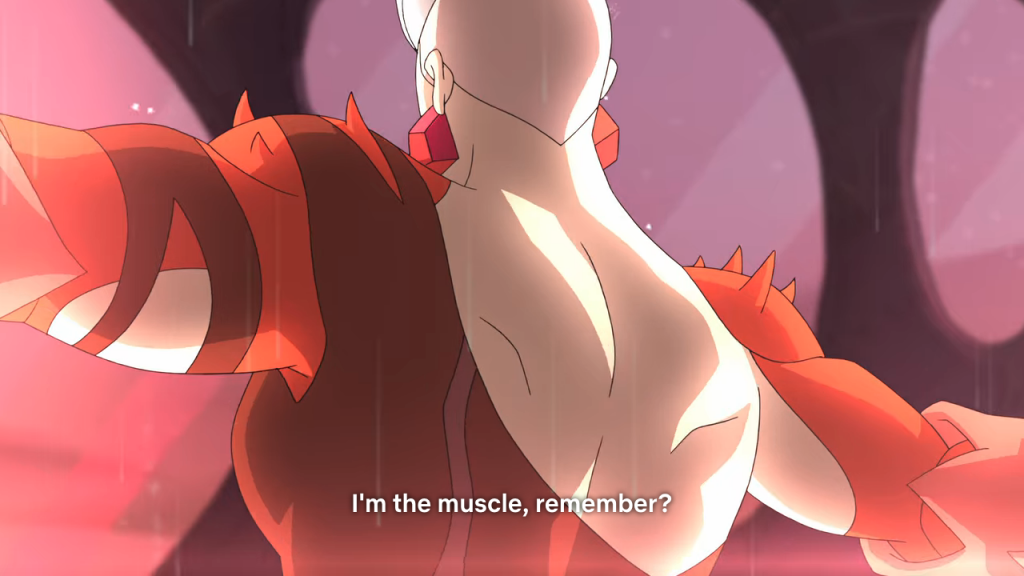
Visually and thematically, this parallels Utena with the hands outstretched as expressions of queer love and liberation. That the series draws from Utena, a pivotal series on lesbian love, for its critical climax should not be surprising, as She-Ra often operates with a lesbian gaze. (To wit, Stevenson has retweeted multiple UtenaXShe-Ra fan art on twitter.) The series, and its many characters, love buff women, and this lesbian gaze grows as the series evolves from its somewhat more generic beginnings in the first season. The most recent entry of a lesbian gaze occurs in season 5, as Scorpia sacrifices herself to save others. That the camera lingers on the musculature of her body both highlighters her strength. In short, queer representation emerges not just from narrative, but through character design and camera movement.
Much like Steven Universe and Revolutionary Girl Utena, She-Ra demonstrates how visual construction (including camera movement and character designs), alongside narrative construction, is critical for forming queer representation.
References
Elderkin, Beth (2020), “She-Ra’s Noelle Stevenson Tells Us How Difficult It Was to Bring Adora and Catra Home,” i09, May 18, https://io9.gizmodo.com/she-ras-noelle-stevenson-tells-us-how-difficult-it-was-1843419358.
Holloway, Daniel (2020), “Steven Universe Creator Looks Back on Her Groundbreaking Series as It Comes to a Close,” Variety, March 18, https://variety.com/2020/tv/features/rebecca-sugar-cartoon-network-steven-universe-1203537231/.
Lopez, Kristen (2020), “She-Ra: Noelle Stevenson on Making Her Lead Character Gay and Inspiring a Generation,” IndieWire, June 26, https://www.indiewire.com/2020/06/she-ra-noelle-stevenson-1202234999/.
Ristola, Jacqueline (2020), “Globalizing Fandoms: Envisioning Queer Futures from Kunihiko Ikuhara to Rebecca Sugar,” in John R. Ziegler & Leah Richards (eds.), Representation in Steven Universe, London: Palgrave, pp. 89-112.
Jacqueline Ristola lives and works as a guest in Tio’tia:ke. She is a Ph.D. candidate in Film and Moving Image Studies at Concordia University, Montréal, and a FRQSC scholar. She received her master’s degree in Cinema and Media studies from York University in 2017, where she also received a Graduate Diploma in Asian Studies from the York Centre for Asian Research. Her research areas include animation/anime studies, media industry studies, and queer theory. Her dissertation examines the transition from broadcast to streaming platforms through the case study of animation television channel Cartoon Network. Her work is published in Animation Studies Online Journal, where she was awarded the inaugural Maureen Furniss Student Essay Award, and also has a chapter in Representation in Steven Universe (Palgrave 2020). She is a member of the Global Emergent Media Lab and the Platform Lab at Concordia University.
